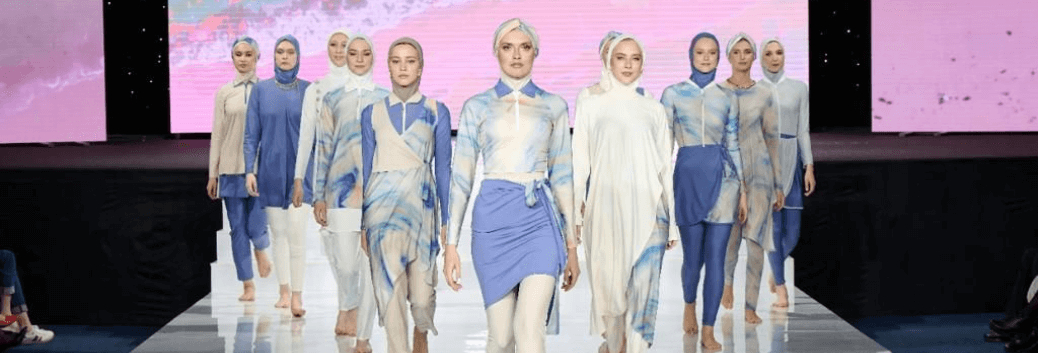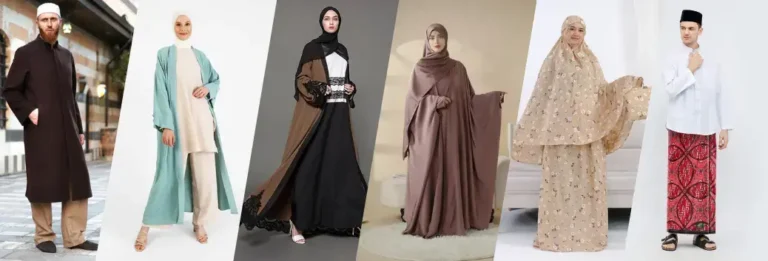In today’s dynamic fashion landscape, an increasing number of consumers are seeking products that align with their ethical, religious, and moral values. This shift reflects a broader awareness and sensitivity towards personal and collective identity. Halal fashion has emerged as a powerful response to these preferences, establishing itself as an industry devoted to crafting clothing and accessories that meet Islamic principles. More than just a market trend, halal fashion is a transformative movement that resonates deeply with the global Muslim community and beyond, representing a fusion of tradition, spirituality, and modern innovation. It champions the idea that faith and fashion can coexist harmoniously, setting a new benchmark for inclusivity and ethical practices in the fashion world.
The Essence of Halal Fashion
Halal fashion transcends aesthetics, embodying the core values of modesty, integrity, and respect for Islamic teachings. The term “halal” signifies permissible according to Sharia law, extending beyond dietary laws to encompass all aspects of life, including fashion. For a product to be considered halal, its production, materials, and design must strictly adhere to Islamic standards. This holistic approach ensures that every element of a garment aligns with faith-driven principles.
Ethical Production and Sustainability
A cornerstone of halal fashion is its commitment to ethical production. This involves ensuring:
- Fair Labor Practices: Upholding humane working conditions and equitable treatment of workers.
- Sustainable Materials: Prioritizing eco-friendly resources that minimize environmental impact.
- Animal Welfare: Avoiding harm or exploitation of animals in the manufacturing process.
Islamic teachings prohibit exploitation and environmental harm, fostering a culture of accountability and transparency. Halal fashion brands emphasize these principles, enabling consumers to make purchases with confidence in their ethical origins. By promoting sustainability and fairness, halal fashion supports a vision of social and environmental harmony.
Modesty in Design
Modesty is a defining characteristic of Islamic dress codes and a central pillar of halal fashion. This principle emphasizes clothing that:
- Covers the body appropriately.
- Avoids overly tight or revealing designs.
Halal fashion designers skillfully blend these values with contemporary aesthetics, creating stylish and elegant pieces that cater to diverse tastes. These designs empower individuals to express their identity while staying true to their faith. By combining modern trends with traditional values, halal fashion offers an inclusive platform for self-expression.
Global Halal Fashion Standards
The establishment of the Global Halal Fashion Standards (GFHS) represents a pivotal advancement in the industry. These standards provide comprehensive guidelines for:
- Manufacturers: Ensuring raw materials and processes meet halal requirements.
- Designers: Creating products that align with Islamic values.
- Retailers: Offering certified halal products to consumers.
The certification process involves rigorous inspections and audits conducted by accredited halal bodies, such as the Majlis Ulama Indonesia (MUI). This collaboration guarantees that every aspect of a fashion item—from sourcing raw materials to final production—meets the highest standards of Islamic ethics.
The Role of Halal Auditors
Halal auditors are integral to maintaining the credibility and integrity of halal fashion. These experts meticulously examine every stage of the supply chain, ensuring:
- Raw materials comply with Islamic principles.
- Production methods adhere to Sharia law.
- Finished products meet halal certification criteria.
Their expertise reassures consumers that certified halal fashion items are genuinely aligned with ethical and religious standards. The diligence of these auditors fortifies the trust placed in halal certifications.
A Global Movement
Halal fashion is not limited to Muslim-majority countries; it has become a global phenomenon. The universal appeal of ethical, modest, and sustainable fashion transcends cultural and religious boundaries, resonating with consumers worldwide. This movement has:
- Fostered greater understanding and appreciation of Islamic culture and values.
- Inspired mainstream brands to incorporate ethical practices into their operations.
- Sparked innovation in fashion technology and sustainable practices.
As the demand for halal fashion continues to grow, it bridges gaps between cultures, promoting inclusivity and mutual respect.
Conclusion
Halal fashion represents a harmonious blend of faith, ethics, and style. It reflects the Muslim community’s dedication to living in accordance with their beliefs while embracing modernity. The Global Halal Fashion Standards (GFHS) serve as a guiding light, ensuring the industry achieves new heights of excellence and integrity.
By supporting halal fashion, we celebrate heritage, promote sustainability, and contribute to a more ethical and inclusive world. This transformative movement is not merely about clothing; it is a testament to the power of values-driven innovation in shaping a better future.




